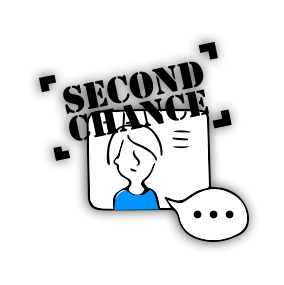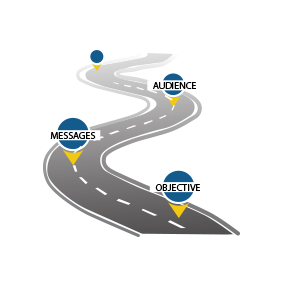Eye Contact is Important for You and Your Audience
Aug 20, 2019 | 7
Why does everyone talk about eye contact? And does it even matter when you’re on virtual meetings and no one can see your face?
 EFFECTIVE EYE CONTACT is looking at one person for three to five seconds at the beginning and end of most sentences.
Your Goal: Many presenters are so anxious and concerned with getting through their talk that they cannot stop their speech for three to five seconds. If this is you, then read about breathing here.
Other Cultures: Some cultures avoid direct eye contact because it is considered disrespectful or confrontational. Even if you feel you should not look your listeners in the eye, you should still pause—it will have some of the same effects as eye contact.
EFFECTIVE EYE CONTACT is looking at one person for three to five seconds at the beginning and end of most sentences.
Your Goal: Many presenters are so anxious and concerned with getting through their talk that they cannot stop their speech for three to five seconds. If this is you, then read about breathing here.
Other Cultures: Some cultures avoid direct eye contact because it is considered disrespectful or confrontational. Even if you feel you should not look your listeners in the eye, you should still pause—it will have some of the same effects as eye contact.
 You may not have another person in the room when you are talking—everyone may be online. I have been taking a webinar series and it is so frustrating. The speakers talk nonstop with no pauses. I don’t have time to finish writing down an idea. I have to interrupt the speaker to ask a question. It makes me anxious, and I’m a presenter! It would be so much better if the speaker paused and included some silence during the webinar. When a speaker does pause, he or she says non-verbally: “I’m giving you space to make a comment or ask a question, or just finish a note you are writing.”
Where are your eyes in a webinar? If your listeners can see you on the webinar, then you should be doing what you do in front of a live audience. End a sentence looking at the camera. Even if you’re not on screen, don’t end your sentences looking down or your voice will drop. Imagine people on the other end of the phone and end looking at them. Be aware, at the end of every sentence that someone out there is listening to you. Sometimes, your voice is all they have. For tips on enhancing your voice, go here. You can do these exercises in the car.
You may not have another person in the room when you are talking—everyone may be online. I have been taking a webinar series and it is so frustrating. The speakers talk nonstop with no pauses. I don’t have time to finish writing down an idea. I have to interrupt the speaker to ask a question. It makes me anxious, and I’m a presenter! It would be so much better if the speaker paused and included some silence during the webinar. When a speaker does pause, he or she says non-verbally: “I’m giving you space to make a comment or ask a question, or just finish a note you are writing.”
Where are your eyes in a webinar? If your listeners can see you on the webinar, then you should be doing what you do in front of a live audience. End a sentence looking at the camera. Even if you’re not on screen, don’t end your sentences looking down or your voice will drop. Imagine people on the other end of the phone and end looking at them. Be aware, at the end of every sentence that someone out there is listening to you. Sometimes, your voice is all they have. For tips on enhancing your voice, go here. You can do these exercises in the car.
 EFFECTIVE EYE CONTACT is looking at one person for three to five seconds at the beginning and end of most sentences.
Your Goal: Many presenters are so anxious and concerned with getting through their talk that they cannot stop their speech for three to five seconds. If this is you, then read about breathing here.
Other Cultures: Some cultures avoid direct eye contact because it is considered disrespectful or confrontational. Even if you feel you should not look your listeners in the eye, you should still pause—it will have some of the same effects as eye contact.
EFFECTIVE EYE CONTACT is looking at one person for three to five seconds at the beginning and end of most sentences.
Your Goal: Many presenters are so anxious and concerned with getting through their talk that they cannot stop their speech for three to five seconds. If this is you, then read about breathing here.
Other Cultures: Some cultures avoid direct eye contact because it is considered disrespectful or confrontational. Even if you feel you should not look your listeners in the eye, you should still pause—it will have some of the same effects as eye contact.
What Eye Contact Does For You As A Presenter
- You slow down at the end of your sentence and sound confident. When you train yourself to end a sentence looking at someone, you pause longer, and this pause relaxes you and gives you time to take a breath.
- You have time to consider what’s important to say. When you pause, you have time to edit out unnecessary details. Otherwise you may just go on and on about information that is boring and irrelevant to your audience.
- You can calm your nerves and concentrate. Try it. When you really focus on each listener, your brain will calm down and you can stay on track.
How You Are Perceived By Your Listeners When You Make Eye Contact
Confident: They think you are confident and knowledgeable. Respectful: They feel you are respecting them by actually talking to them and acknowledging their existence. Trustworthy: They perceive you as trustworthy and sincere as you are willing to “look them in the eye.” They feel that they can be more honest about their opinions and feelings.What Eye Contact Means For Your Listeners
Interaction: They have space to ask a question or make a comment, so they relax as they feel there is room for them to participate. Time: They feel they have time to finish taking notes and/or digesting what you just said.Convinced? Here Are Some Techniques to Practice
- Sit in a chair and read something. After the period at the end of each sentence, pause and tap your hand three times. This will feel contrived, but do it anyway. You want to feel the rhythm of pausing.
- Practice your talk and at the end of each sentence pause, tap your hand or foot, or count 1, 2, 3. Again, you will get the rhythm of pausing and having silence.
- Practice your presentation or just have a conversation with a partner. Have your partner raise his or her hand when you end the sentence. Then stop talking, count to three, and start again. This will help you learn to pause and leave some silence and breathing room between your sentences.
- Ask someone to watch you as you present and tell you if you finish your sentences looking at a listener or at the slide or your notes.
- Have someone watch your presentation and, for three minutes, count how many times you really pause. Ask this person, did you feel I gave you enough silence so you could break into my presentation to ask a question?
What About Webinars and Virtual Meetings?
 You may not have another person in the room when you are talking—everyone may be online. I have been taking a webinar series and it is so frustrating. The speakers talk nonstop with no pauses. I don’t have time to finish writing down an idea. I have to interrupt the speaker to ask a question. It makes me anxious, and I’m a presenter! It would be so much better if the speaker paused and included some silence during the webinar. When a speaker does pause, he or she says non-verbally: “I’m giving you space to make a comment or ask a question, or just finish a note you are writing.”
Where are your eyes in a webinar? If your listeners can see you on the webinar, then you should be doing what you do in front of a live audience. End a sentence looking at the camera. Even if you’re not on screen, don’t end your sentences looking down or your voice will drop. Imagine people on the other end of the phone and end looking at them. Be aware, at the end of every sentence that someone out there is listening to you. Sometimes, your voice is all they have. For tips on enhancing your voice, go here. You can do these exercises in the car.
You may not have another person in the room when you are talking—everyone may be online. I have been taking a webinar series and it is so frustrating. The speakers talk nonstop with no pauses. I don’t have time to finish writing down an idea. I have to interrupt the speaker to ask a question. It makes me anxious, and I’m a presenter! It would be so much better if the speaker paused and included some silence during the webinar. When a speaker does pause, he or she says non-verbally: “I’m giving you space to make a comment or ask a question, or just finish a note you are writing.”
Where are your eyes in a webinar? If your listeners can see you on the webinar, then you should be doing what you do in front of a live audience. End a sentence looking at the camera. Even if you’re not on screen, don’t end your sentences looking down or your voice will drop. Imagine people on the other end of the phone and end looking at them. Be aware, at the end of every sentence that someone out there is listening to you. Sometimes, your voice is all they have. For tips on enhancing your voice, go here. You can do these exercises in the car.


